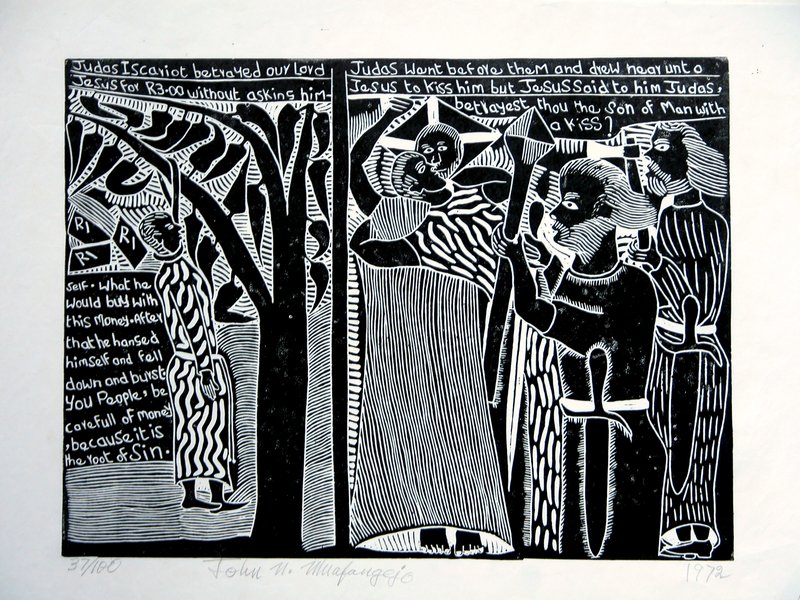
John Muafangejo (1934-1987)
Linocut on paper
34 x 45 cm
1972
Methodist Modern Art Collection
MUA/2008/1
Image Copyright © Trustees for Methodist Church Purposes. The Methodist Church Registered Charity no. 1132208
Biblical commentary
Matthew 26.47-50, Matthew 27.3-5
This work is divided into two parts. On the right, a clean-shaven Judas is shown embracing Jesus while two bearded figures, with weapons in their hands and sheathed swords, look on. They must be part of the high priest’s entourage. Above are words from Luke’s Gospel (22:48). On the left Judas is shown hanging from a tree: three 1-rand notes (the currency of South Africa where the artist was born), the price of betrayal, can be seen below the foliage. The words on this side are non-biblical.
Commentary based on A Guide to the Methodist Art Collection.